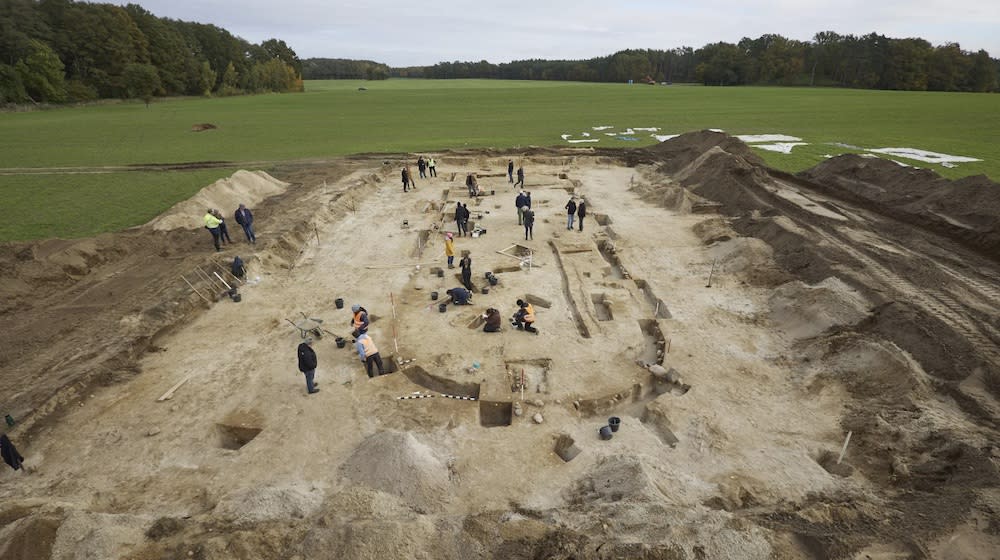'Spectacular' hall, likely used by Nordic Bronze Age royalty, unearthed in Germany

Archaeologists in Germany have discovered the remains of a massive hall that was likely used by royalty roughly 3,000 years ago.
With a floor plan stretching 102 by 33 feet (31 by 10 meters), the enormous structure, located near what is now Berlin, is the largest known ancient construction of its kind in the region. It was built sometime between the 10th and ninth centuries B.C. during the Nordic Bronze Age (2200 to 500 B.C.), according to a translated statement.
"We were overwhelmed by how big this building must have been," Immo Heske, an archaeologist at Georg-August University of Göttingen in Germany who found the hall in March with his team, said in the statement. Researchers dubbed the discovery a "spectacular find."
Related: 'Octagonal' sword from Bronze Age burial in Germany is so well preserved, it shines
Researchers think the building once served as a meeting hall for King Hinz, the supposed ruler of Prignitz, now a district in northern Germany, who was allegedly buried in a golden coffin, according to a translated article in Spiegel Science.
However, not much has been written about the king, whose story remains a mystery to this day.
Further investigation of the hall revealed that the building's walls were made using wooden planks and wattle and daub — a building technique that sandwiches a sticky substance, such as wet soil and clay, between woven strips of wooden lattice — and were finished with clay plaster. The roof was covered with straw or thatch, according to the statement.
RELATED STORIES
—Bronze Age hexagonal 'pyramid' not like anything 'found before in the Eurasian steppe'
—Stash of 'eye-catching' Bronze Age jewelry discovered by metal detectorist in Swiss carrot field
—Vast cemetery of Bronze Age burial mounds unearthed near Stonehenge
Because of the building's height, which measured 23 feet (7 m), researchers think the structure would have contained multiple stories. In addition to the remaining hall, archaeologists unearthed a centrally located fireplace and a miniature vessel possibly used for rituals.
The structure sits in the same area as a cemetery, which workers discovered by chance in 1899 during a road construction project. Only two other buildings of this size have been found between Germany and Denmark.

